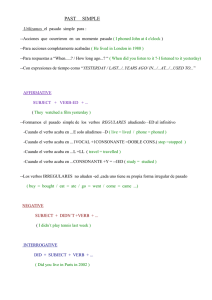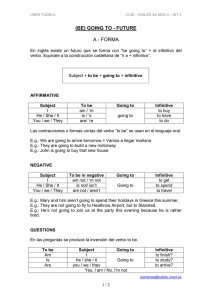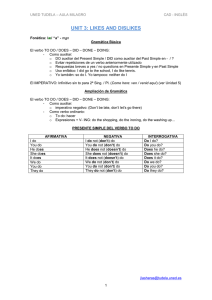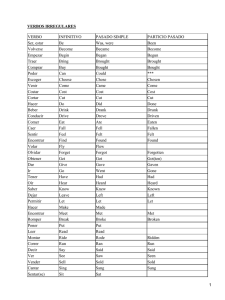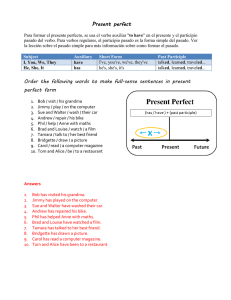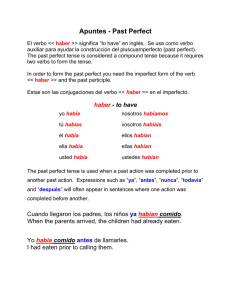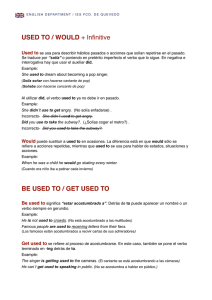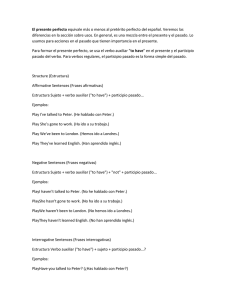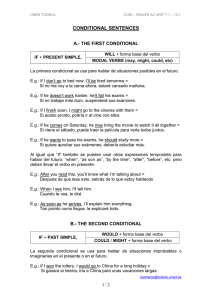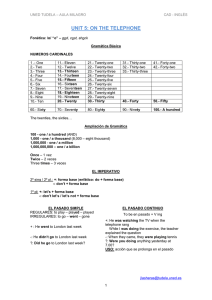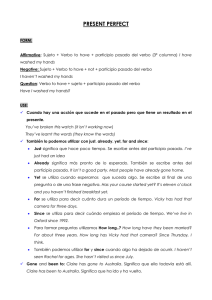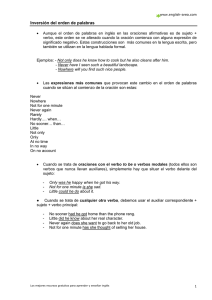there + be a. - Horarios de los centros asociados de la uned
Anuncio
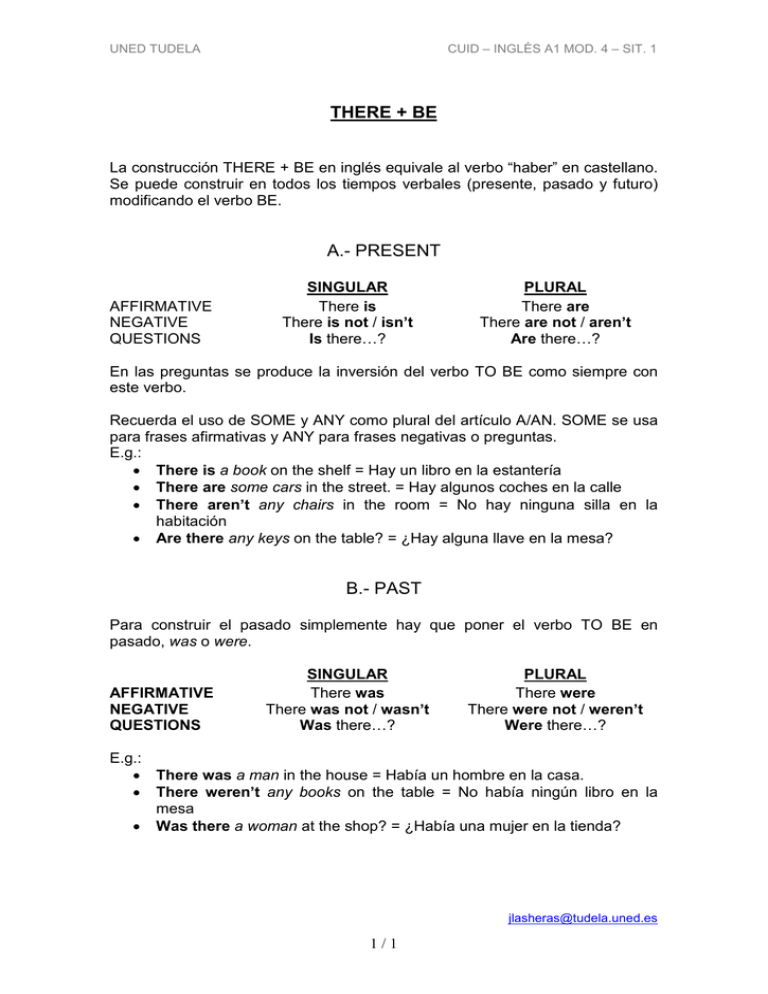
UNED TUDELA CUID – INGLÉS A1 MOD. 4 – SIT. 1 THERE + BE La construcción THERE + BE en inglés equivale al verbo “haber” en castellano. Se puede construir en todos los tiempos verbales (presente, pasado y futuro) modificando el verbo BE. A.- PRESENT AFFIRMATIVE NEGATIVE QUESTIONS SINGULAR There is There is not / isn’t Is there<? PLURAL There are There are not / aren’t Are there<? En las preguntas se produce la inversión del verbo TO BE como siempre con este verbo. Recuerda el uso de SOME y ANY como plural del artículo A/AN. SOME se usa para frases afirmativas y ANY para frases negativas o preguntas. E.g.: • There is a book on the shelf = Hay un libro en la estantería • There are some cars in the street. = Hay algunos coches en la calle • There aren’t any chairs in the room = No hay ninguna silla en la habitación • Are there any keys on the table? = ¿Hay alguna llave en la mesa? B.- PAST Para construir el pasado simplemente hay que poner el verbo TO BE en pasado, was o were. AFFIRMATIVE NEGATIVE QUESTIONS SINGULAR There was There was not / wasn’t Was there<? PLURAL There were There were not / weren’t Were there<? E.g.: • There was a man in the house = Había un hombre en la casa. • There weren’t any books on the table = No había ningún libro en la mesa • Was there a woman at the shop? = ¿Había una mujer en la tienda? jlasheras@tudela.uned.es 1/1
